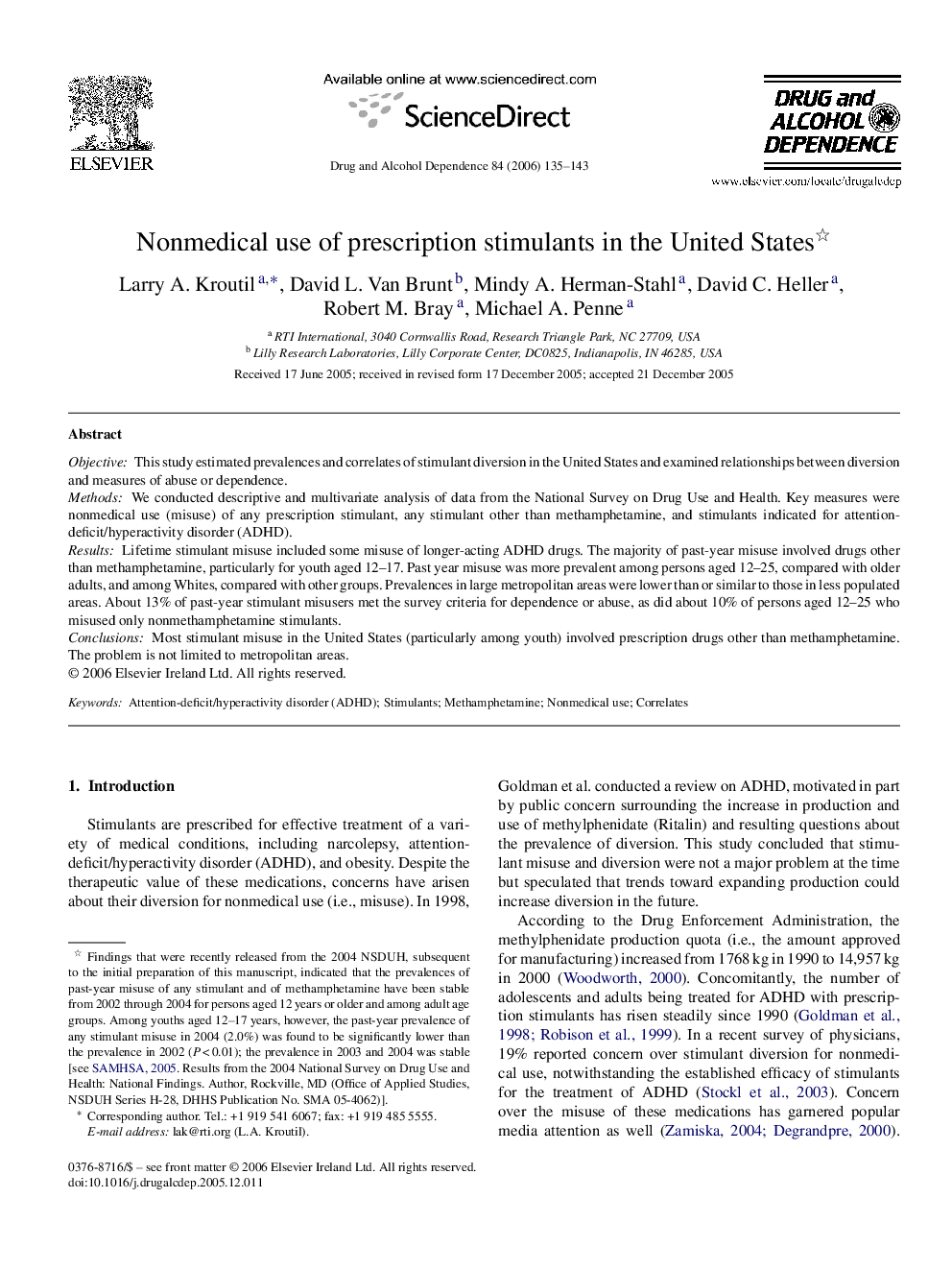| Article ID | Journal | Published Year | Pages | File Type |
|---|---|---|---|---|
| 1071546 | Drug and Alcohol Dependence | 2006 | 9 Pages |
ObjectiveThis study estimated prevalences and correlates of stimulant diversion in the United States and examined relationships between diversion and measures of abuse or dependence.MethodsWe conducted descriptive and multivariate analysis of data from the National Survey on Drug Use and Health. Key measures were nonmedical use (misuse) of any prescription stimulant, any stimulant other than methamphetamine, and stimulants indicated for attention-deficit/hyperactivity disorder (ADHD).ResultsLifetime stimulant misuse included some misuse of longer-acting ADHD drugs. The majority of past-year misuse involved drugs other than methamphetamine, particularly for youth aged 12–17. Past year misuse was more prevalent among persons aged 12–25, compared with older adults, and among Whites, compared with other groups. Prevalences in large metropolitan areas were lower than or similar to those in less populated areas. About 13% of past-year stimulant misusers met the survey criteria for dependence or abuse, as did about 10% of persons aged 12–25 who misused only nonmethamphetamine stimulants.ConclusionsMost stimulant misuse in the United States (particularly among youth) involved prescription drugs other than methamphetamine. The problem is not limited to metropolitan areas.
